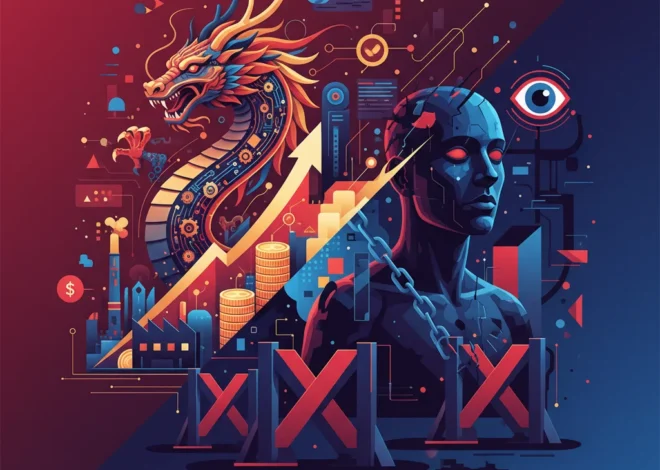
The Billion-Dollar Glitch: How a Cyber-Attack Drove Jaguar Land Rover into the Red
A Warning Shot for Global Industry
In the intricate ballet of modern manufacturing, every movement is choreographed with digital precision. From supply chain logistics to the robotic arms on the assembly line, technology is the silent conductor of a symphony that produces the marvels of our age. But what happens when a malicious actor hijacks the conductor’s podium? Jaguar Land Rover (JLR), the iconic British luxury carmaker, just gave the world a chilling and costly answer. The company recently posted a staggering pre-tax loss of £455 million for the final quarter of the previous year, a stark reversal of fortune directly attributed to a crippling cyber-attack that forced a complete shutdown of its production lines. According to the BBC report, this single event pushed the automotive giant deep into the red, transforming projected profits into a significant deficit.
This incident is far more than a headline for the automotive or tech industries. It is a critical case study for anyone involved in finance, investing, and corporate leadership. It demonstrates, in stark financial terms, that cybersecurity is no longer a peripheral IT concern but a core component of operational risk, with the power to decimate a company’s bottom line, disrupt the global economy, and send shockwaves through the stock market.
Anatomy of a Digital Catastrophe
To truly grasp the financial impact, we must first understand the operational paralysis that a cyber-attack can inflict on a modern manufacturer like JLR. The days of purely mechanical assembly lines are long gone. Today’s automotive plants are sprawling networks of interconnected systems, a prime example of advanced financial technology being applied to industrial processes.
These systems include:
- Enterprise Resource Planning (ERP): The digital brain that manages everything from parts inventory and supplier payments to production schedules.
- Manufacturing Execution Systems (MES): The nervous system that controls the physical machinery on the factory floor.
- Supply Chain Management (SCM): The logistical web that ensures thousands of components arrive at the right place at the exact right time—a concept known as “just-in-time” manufacturing.
When hackers strike, they don’t just steal data; they can sever these digital nerves. By deploying ransomware or other malware, they can freeze the ERP, scramble production schedules, and halt the flow of parts. The result is a factory full of state-of-the-art equipment rendered inert. For JLR, this meant a complete production halt. No cars being built means no cars being shipped, and no cars being shipped means zero revenue from those lines, while the colossal fixed costs—facilities, non-production staff, and energy—continue to mount. This is the brutal arithmetic that turned a promising quarter into a financial disaster.
The vulnerability of just-in-time manufacturing, a system designed for maximum efficiency and minimal inventory cost, becomes a glaring liability. It relies on a perfect, uninterrupted flow of information and materials. A cyber-attack is the ultimate disruption, a digital dam that instantly floods the entire ecosystem with chaos and cost.
Beyond the Banks: Is the Entire Financial Sector Due for a Windfall Tax?
The Ripple Effect: Beyond the Factory Gates
A production halt at a company the size of JLR doesn’t happen in a vacuum. The financial shockwave travels outward, impacting a vast network of suppliers, logistics partners, and dealers. Small and medium-sized enterprises that supply specific components to JLR suddenly found their biggest customer unable to accept orders, leading to their own revenue shortfalls and potential workforce disruptions. This illustrates how a single corporate cyber-attack can have tangible consequences for the broader economy, stifling growth and creating uncertainty that can spook the market.
For investors, the event triggers a painful reassessment of the company’s value. The immediate loss is just the beginning. The market must also price in the long-term costs:
- Remediation Costs: The expense of hiring cybersecurity experts, rebuilding systems, and implementing new security measures can run into the tens or hundreds of millions.
- Reputational Damage: Trust is a cornerstone of a luxury brand. Production delays and the perception of vulnerability can deter potential customers.
- Increased Insurance Premiums: After such an attack, the cost of cyber insurance for the company will skyrocket.
- Regulatory Fines: Depending on the nature of the breach, especially if customer data was compromised, massive regulatory fines could follow.
This cascade of costs creates a cloud of uncertainty that investors detest, often leading to a sell-off and a depressed stock price for the parent company, Tata Motors. It’s a brutal lesson in how quickly digital risk can translate into shareholder value destruction.
Beyond the Golden Arches: McDonald's UK Scandal and the New Financial Reality of Corporate Culture
A Costly Club: JLR in Context
While shocking, JLR’s experience is unfortunately not unique. It is simply the latest high-profile example of a growing trend. Major corporations across various sectors have learned about the devastating financial power of cyber-attacks the hard way. The costs are not theoretical; they are documented in quarterly reports and have become a significant factor in modern corporate finance.
The following table provides a snapshot of the estimated financial damages from some of the most infamous corporate cyber-attacks in recent history, putting JLR’s loss into a broader context.
| Company | Year of Attack | Type of Attack | Estimated Financial Impact |
|---|---|---|---|
| Maersk | 2017 | NotPetya Ransomware | $300 Million+ (source) |
| Merck | 2017 | NotPetya Ransomware | $1.4 Billion+ (source) |
| Norsk Hydro | 2019 | LockerGoga Ransomware | $75 Million+ |
| Equifax | 2017 | Data Breach | $1.7 Billion+ (Fines & Costs) |
This data underscores a critical reality: the cost of prevention, while significant, pales in comparison to the cost of recovery. According to IBM’s 2023 “Cost of a Data Breach Report,” the global average cost of a data breach reached an all-time high of $4.45 million, a figure that skyrockets when it involves the complete shutdown of a multinational corporation’s core operations.
Rethinking Investment Strategy in the Digital Age
For the modern investor, financial analyst, and anyone involved in the capital markets, the JLR incident should prompt an evolution in strategy. Evaluating a company solely on its financial statements is like driving a car by only looking in the rearview mirror. A forward-looking approach must incorporate a qualitative assessment of a company’s digital fortitude.
Here are key considerations for today’s investing landscape:
- Scrutinize ESG Reports: Environmental, Social, and Governance (ESG) reports are increasingly including details on cybersecurity governance. Look for evidence of a dedicated C-suite executive (like a CISO), regular board-level briefings on cyber threats, and investments in security infrastructure.
- Diversify with Cyber-Resilience in Mind: Consider the concentration of risk in industries that are highly digitized and operate on thin margins, like manufacturing and logistics. Conversely, the cybersecurity industry itself presents a compelling investment opportunity as demand for its services becomes non-negotiable.
- Watch for Emerging Technologies: While not a panacea, technologies like blockchain are being explored for their potential to create more secure and transparent supply chains. A company that is proactively investigating and investing in next-generation security and operational tech may represent a more forward-thinking, and potentially safer, long-term investment.
The Road Ahead: Fortifying Our Digital Economy
The red ink on Jaguar Land Rover’s ledger is a warning written for all to see. It signals that in our hyper-connected world, the biggest threats to a company’s financial health may not come from a market competitor or an economic downturn, but from a faceless adversary exploiting a vulnerability in a line of code. The future of successful business and prudent investing will depend on our ability to build and maintain digital resilience.
This requires a cultural shift—from viewing cybersecurity as an IT cost center to embracing it as a strategic imperative essential for survival and growth. For leaders in business, banking, and finance, the lesson is clear: fortify your digital walls, or be prepared for the financial consequences when they inevitably crumble.


